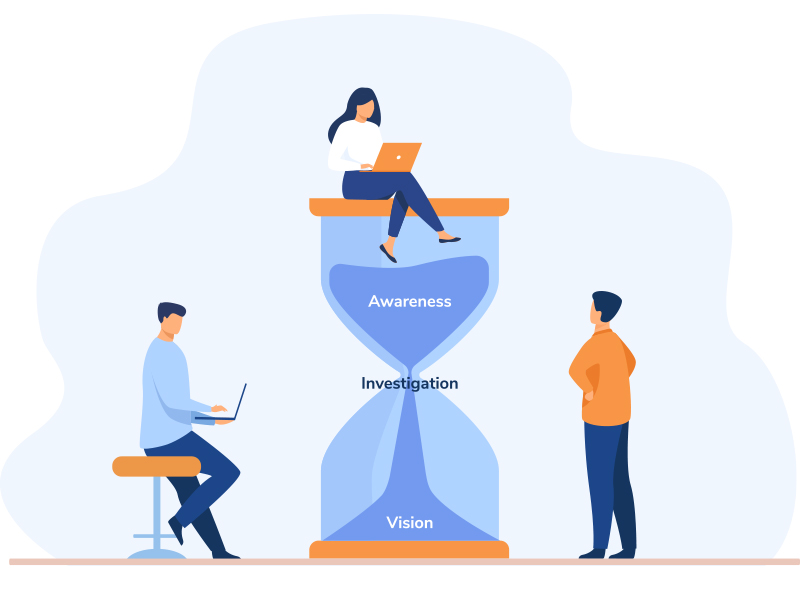In section 3.1 and 3.2 you learned a little about the evolution of musical scores and some skills the conductor needs in dealing with the nuts and bolts of the notes that s/he might see in them. The score is the most important tool for a modern conductor in shaping ideas and an interpretation which s/he wishes to communicate to the orchestra. It is vital therefore, that the conductor has a deep understanding of the music as it is conveyed through the notation of the score.
The method of working toward a complete understanding of a score must involve systematic steps. An arbitrary approach might not result in accurately learning the score and will waste the conductor valuable time. A planned approach, although seemingly more involved, will be much faster in the long run.

In general, the process of studying a score is similar to the shape of an hourglass (see Fig.3.4). It proceeds from larger overall concepts and works toward smaller details, until the details are then integrated back into a larger interpretation. As a general guideline we recommend dividing the score study process into steps.
- Awareness
- Investigation
- Vision
We are suggesting three steps but there are other possibilities, for example, Battisti and Garofalo (1990).
The first step in analysing and studying a new score is to become acquainted with the overall look of the score. This step can further be divided into two or three parts:
Part 1: The First Pages
Part 2: Scan Through
Part 3: The Text Awareness (for works with text – vocal or choral music)